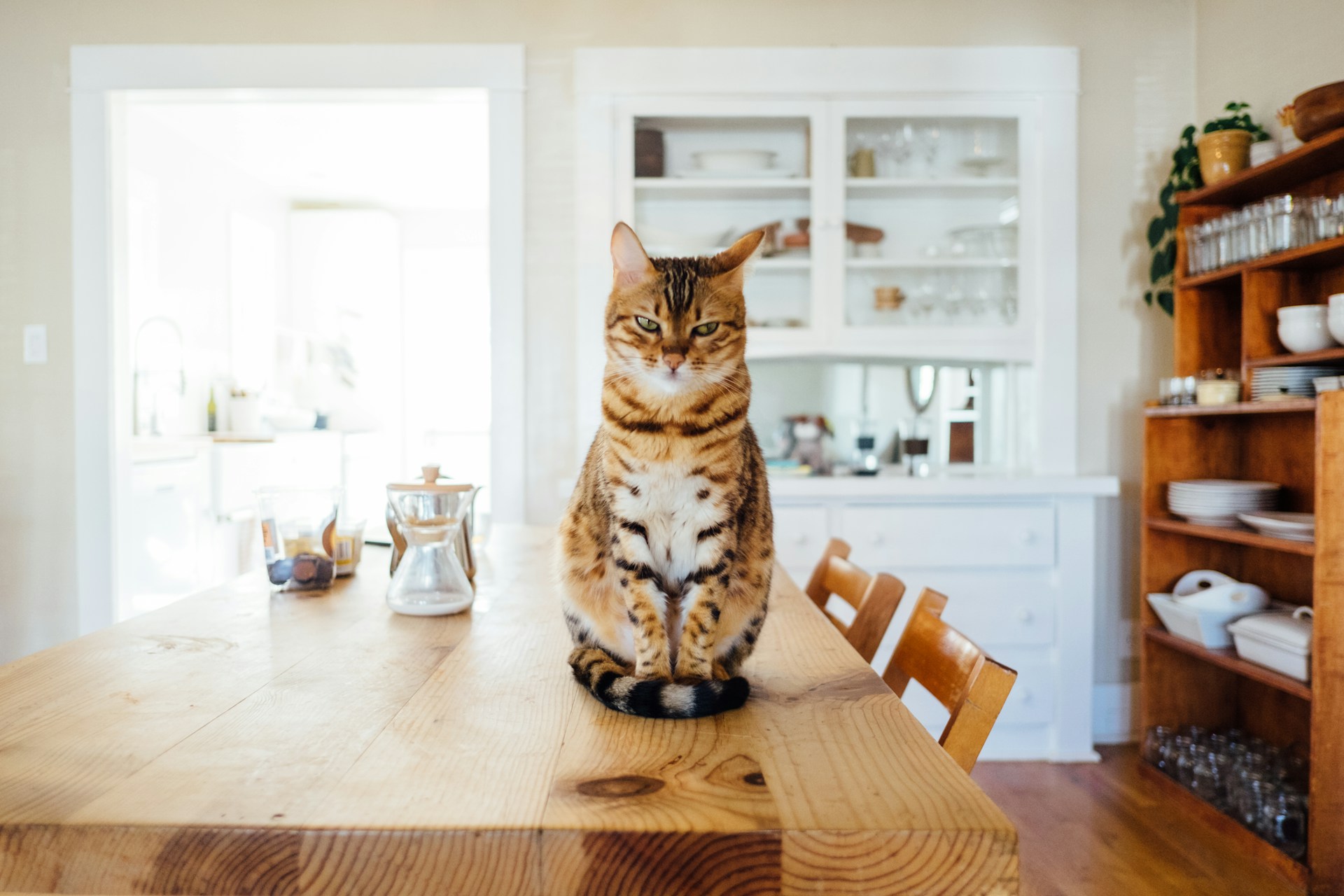What Are the Safe and Non-Toxic Houseplant Options for a Home with Curious Cats?

In a world where urban living is increasing, and outdoor spaces are shrinking, many of us have turned to indoor plants to bring a bit of nature into our homes. Houseplants are not only aesthetically pleasing but also contribute to our well-being by purifying the air and bringing a sense of calm. However, if you share your home with cats, your well-intentioned greenery could pose a threat to your beloved pets. Not all plants are safe for cats, and some can be downright toxic if chewed or swallowed. In this article, we’ll share with you some cat-safe houseplants and how to ensure your furry friends stay safe amidst your indoor greenery.
Cat-Safe Houseplants
When it comes to selecting houseplants that are safe for cats, there are several species that you can consider. These plants are non-toxic and won’t harm your pet if they decide to take a nibble.
A lire aussi : What Are the Best Types of Mental Enrichment Activities for a Bored Chihuahua?
Spider Plants
Spider plants are one of the most popular cat-safe houseplants. They are hardy, easy to care for, and thrive in bright, indirect light. Plus, their long, arching leaves can provide a great plaything for your cats.
Areca Palm
The Areca Palm, also known as the Butterfly Palm, is a pet-safe plant that can add a tropical feel to your home. It thrives in bright, indirect light and prefers well-draining soil. Keep in mind, this palm doesn’t like to be overwatered.
A voir aussi : How to Train a Golden Retriever to Assist with Mobility for People with Disabilities?
Boston Fern
Boston Ferns are safe for cats and can tolerate a range of light conditions. However, they do prefer a humid environment, which might require you to mist the plant regularly or place it on a tray with water.
Understanding Light Requirements
Understanding your houseplant’s light requirements is crucial for its survival. All plants need light to photosynthesize and grow, but the amount and intensity of light required varies from plant to plant.
Bright Indirect Light
Plants that require bright indirect light should be placed near a window that receives a lot of light, but not directly in the sun’s rays. Spider plants and Areca Palms, for instance, thrive in these conditions.
Low Light
Some plants can survive with minimal light, making them ideal for spaces with limited natural light. The Boston Fern is an example of such a plant. However, “low light” doesn’t mean “no light.”
Direct Light
Direct light plants need to bask in the sun for several hours a day. These plants are not ideal for homes with cats as they tend to be desert plants like cacti and succulents, which often have spines or toxic sap.
Caring for Your Cat-Safe Houseplants
Caring for your houseplants involves more than just watering them. You also need to consider the type of soil they need, how often to fertilize, and how to protect them from pests.
Watering
Overwatering is a common mistake when caring for houseplants. It’s vital to understand that each plant has different watering needs. For example, the Spider plant prefers its soil to dry out between waterings, while the Boston Fern likes consistently moist soil.
Soil and Fertilizing
Choosing the right soil is crucial for your plants’ growth. Most houseplants do well with a general-purpose potting soil, but some require more specific mixtures. Regularly fertilizing your plants can also help them grow healthier and stronger.
Pest Management
Finally, keep an eye out for common pests like aphids, mealybugs, and spider mites which can harm your plants. Regularly check your plants for signs of these pests and use appropriate treatments if necessary.
Keeping Your Curious Cats Safe Around Houseplants
While the plants mentioned in this article are safe for cats, it’s still essential to monitor your pet’s interaction with them. Some cats might have allergies or get an upset stomach from eating too much plant material.
Providing Alternatives
To keep your cats from munching on your plants, provide them with alternatives like cat grass or catnip. They’ll be more attracted to these plants and leave your houseplants alone.
Location of Plants
You can also strategic about where you place your plants. Try putting them in places where your cats can’t easily reach them, like high shelves or hanging baskets.
Remember, living harmoniously with both plants and cats in your home is possible. By selecting non-toxic options, understanding your plants’ light requirements, and practicing good plant care, you can keep your indoor greenery thriving without compromising your pet’s safety. It’s truly a win-win situation for plant and pet lovers!
More Non-Toxic Houseplants for Cats and Their Care Instructions
In addition to the Spider Plant, Areca Palm, and Boston Fern, there are several other cat-safe houseplants you can add to your indoor garden.
Money Tree
The Money Tree, also known as Pachira aquatica, is a pet-friendly plant that can grow up to seven feet indoors. It enjoys bright indirect light and well-drained soil. Overwatering can cause root rot, so it’s best to let the soil dry out between watering.
Prayer Plant
The Prayer Plant is a cat-safe option for homes with low light. These plants are named for their unique habit of raising their leaves at night, as if in prayer. They prefer bright indirect light but can tolerate low light. Keep the soil consistently moist, but never waterlogged.
Ponytail Palm
The Ponytail Palm is a low-maintenance houseplant that’s safe for cats. It thrives in bright light and well-drained soil. Despite its name, it’s not actually a palm but a type of succulent. Therefore, it can store water in its trunk and tolerate periods of drought.
Understanding and Managing Houseplants Toxic to Cats
While we’ve discussed several cat friendly indoor plants, it’s equally essential to be aware of plants toxic to cats. This knowledge can prevent accidental ingestion and the subsequent health issues that could affect your pet.
Toxic Plants
Some common houseplants are toxic to cats, including the Lily, Azalea, and Pothos. Signs of poisoning include drooling, vomiting, diarrhea, and in severe cases, kidney failure or death. If you suspect your cat has ingested a toxic plant, take them to the vet immediately.
Safe Spaces
Creating a safe environment for your cat doesn’t mean you have to give up on plants altogether. Separate the spaces for toxic plants and cats, using shelves or rooms that your cat cannot access.
Conclusion
Indoor plants not only enhance the beauty of your home, they also purify the air and create a soothing environment. However, if you’re a cat owner, extra caution is needed when incorporating greenery into your home. Opting for cat safe indoor plants like the Spider Plant, Areca Palm, Boston Fern, Money Tree, Prayer Plant, and Ponytail Palm can help prevent any unwanted health issues for your feline friend.
Understanding the light requirements and care instructions for each plant type is also crucial for maintaining healthy indoor greenery. And, while every effort should be made to choose non-toxic cats, being aware of which plants are harmful can help prevent accidents.
Remember, the goal is not to compromise but to create a cohabitable space for everyone in your household, plants included. It may require a bit of effort and planning, but the result is a home that’s green, vibrant, and pet-friendly – a true urban jungle that’s safe for every creature that lives in it.
